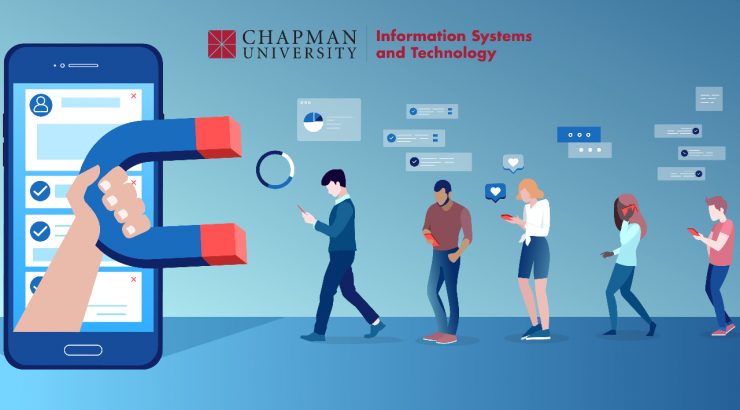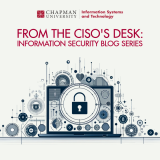
A Warning From the FBI: How Bad Actors Use Social Engineering to Enable Hacking of Academia
July 6, 2023
In today’s interconnected world, academia is increasingly vulnerable to cyberattacks. The pursuit of knowledge and research makes it a prime target for bad actors seeking to exploit vulnerabilities and gain unauthorized access to valuable information. Social engineering emerges as one of the most insidious methods hackers use to facilitate attacks.
The FBI, U.S. Department of State, and NSA continuously monitor foreign government-sponsored cyber-attacks. Together with the Republic of Korea’s National Intelligence Service (NIS), National Police Agency (NPA), and Ministry of Foreign Affairs (MOFA), they have recently issued an advisory to highlight the use of social engineering by Democratic People’s Republic of Korea (DPRK a.k.a. North Korea) state-sponsored cyber actors to enable computer network exploitation (CNE) globally against individuals employed by research centers and think tanks, academic institutions, and news media organizations.
These malicious cyber actors are notorious for using spear-phishing campaigns to impersonate journalists or academics and gather sensitive intelligence on foreign policy strategies, geopolitical events, and diplomatic efforts. Through social engineering, they unlawfully infiltrate confidential documents, research, and communications.
This blog will delve into the tactics utilized by these bad actors to enable the hacking of academia, shedding light on the potential consequences for the education system.
Understanding Social Engineering:
Social engineering is an art that revolves around manipulating individuals to divulge sensitive information or perform actions that compromise security. Instead of directly attacking a system, hackers exploit the weakest link in the security chain: human psychology. By leveraging trust, deception, and manipulation, bad actors can trick unsuspecting victims into providing access to privileged information or systems.
Academia as a Target:
Academic institutions possess a wealth of valuable data, ranging from research findings and intellectual property to student information and financial records. Consequently, they become enticing targets for hackers due to several reasons. Firstly, stolen intellectual property can significantly benefit competitors or state-sponsored entities. Secondly, universities house vast amounts of personal data, which, if compromised, can lead to identity theft, financial fraud, or blackmail. Lastly, the computational power available within academic institutions can be hijacked for nefarious activities such as cryptocurrency mining or as a launching pad for larger-scale attacks.
Social Engineering Techniques:
Bad actors employ various social engineering techniques to enable their hacking efforts within academia. Phishing attacks are prevalent, involving sending deceptive emails or creating fake websites resembling legitimate ones, tricking victims into disclosing their login credentials or sensitive information. Another method, pretexting, entails hackers posing as trustworthy individuals, such as professors, administrators, or students, to manipulate victims into revealing confidential data or performing specific actions. On the other hand, Baiting entices individuals with infected USB drives, counterfeit software, or enticing links, allowing malware to be introduced into the system. Lastly, impersonation plays a role as hackers assume trusted roles or use stolen credentials to gain unauthorized access to systems or sensitive areas within academia, exploiting the inherent trust associated with those roles.
Consequences for Academia:
Successful social engineering attacks on academia can have far-reaching consequences. Data breaches involving the theft or exposure of sensitive research data, student information, or financial records can have severe legal, financial, and reputational implications for academic institutions. Intellectual property theft undermines an institution’s competitive advantage and can impact future funding and impede academic progress. Compromised credentials lead to identity theft, financial fraud, or unauthorized manipulation of academic records. Furthermore, successful attacks can disrupt normal operations within academic institutions, causing system outages, delays in research, or the loss of critical data.
Protecting Against Social Engineering Attacks:
To mitigate the risks associated with social engineering attacks, we must prioritize cybersecurity and implement robust preventive measures. Regular education and training programs should be conducted for students, faculty, and staff, raising awareness about social engineering attacks, teaching them how to identify such threats, and guiding them on appropriate actions. Additionally, using multi-factor authentication (MFA) across systems provides an added layer of security, making it more difficult for hackers to gain unauthorized access. Regular system and software updates, along with the use of reputable antivirus software, are essential for safeguarding against malware and other malicious activities. Lastly, fostering a culture of vigilance and promoting an open line of communication regarding cybersecurity concerns within academia can help identify potential threats and respond promptly to mitigate risks.
If you receive a suspicious email in your Chapman account, do not click on any link or reply to the sender. Instead, please continue to report any malicious message by forwarding it as an attachment to abuse@chapman.edu. To see the latest trending scams, please visit www.chapman.edu/scams.
Stay vigilant, stay safe!
Chapman University IS&T (Information Systems & Technology)
